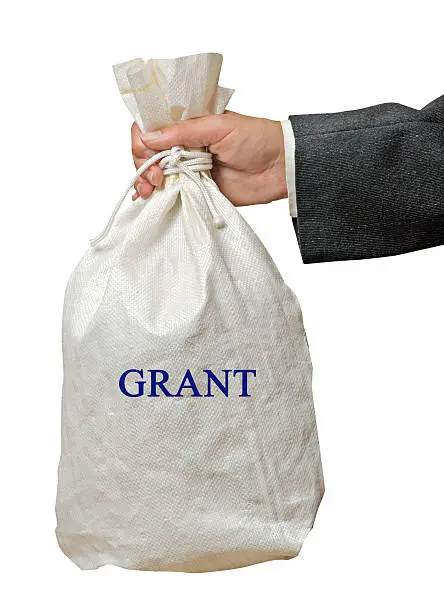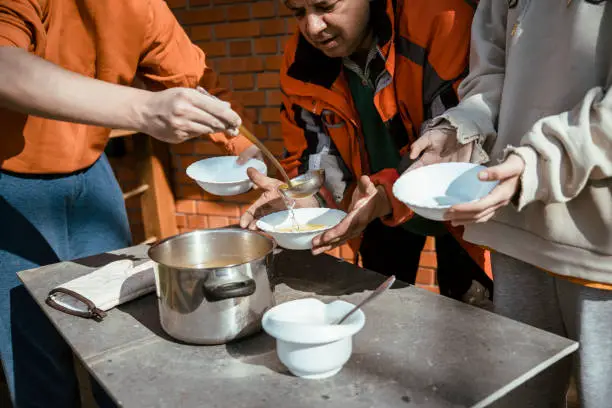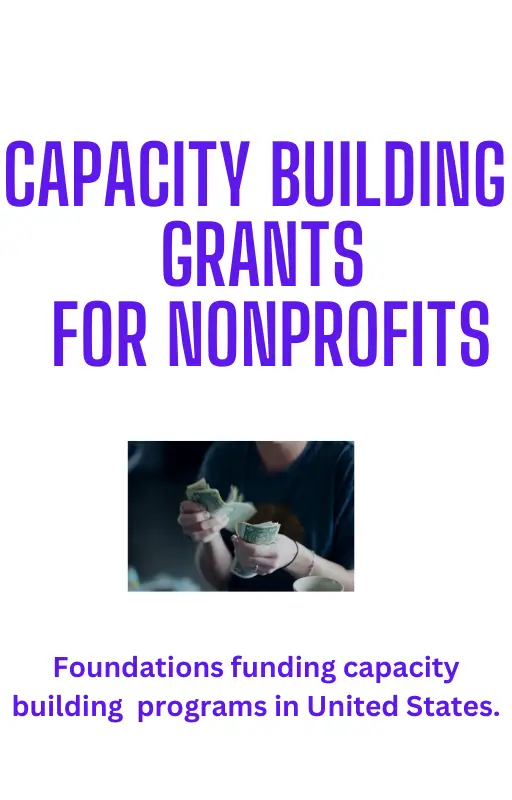Highlighting Key Projects Funded by the Semnani Family Foundation
The Semnani Family Foundation, through its philanthropic initiatives, has funded numerous key projects that have had a profound impact on various communities. These projects, spanning across diverse sectors like healthcare, education, and disaster relief, underscore the foundation’s commitment to making a meaningful difference in the world.
Revolutionizing Healthcare Access and Quality
One of the most significant areas where the Semnani Family Foundation has made an impact is in healthcare. The foundation has funded the establishment and upgrade of healthcare facilities in underprivileged areas, vastly improving access to medical services. Notably, these projects have not only provided essential healthcare infrastructure but have also focused on advanced medical research, particularly in areas like disease prevention and treatment, benefiting populations at a larger scale.
Educational Empowerment: Scholarships and Infrastructure
In education, the foundation’s efforts have been equally transformative. It has funded the construction of schools and libraries, particularly in regions where educational resources are scarce. Additionally, the foundation has provided numerous scholarships, enabling students from disadvantaged backgrounds to pursue higher education. These educational initiatives have played a crucial role in empowering individuals and communities through knowledge and skill development.
Environmental Sustainability: Protecting Our Planet
The Semnani Family Foundation has also been active in the environmental sector, funding projects that focus on conservation and sustainability. These initiatives range from promoting sustainable agricultural practices to preserving natural habitats and biodiversity. The foundation’s commitment to the environment reflects its understanding of the importance of a healthy planet for the well-being of all communities.
Disaster Relief: Immediate Aid and Long-Term Recovery
In response to natural disasters, the foundation has provided immediate aid and support, playing a pivotal role in relief efforts. Beyond immediate assistance, the foundation has also been involved in long-term recovery and rebuilding projects, helping communities to not only recover from disasters but also to build resilience against future challenges.
Cultural and Community Development Initiatives
The foundation’s contributions to cultural and community development have been notable as well. It has supported projects that promote arts and culture, fostering community cohesion and preserving cultural heritage. These projects have been instrumental in strengthening the social fabric of communities and promoting a sense of identity and belonging.
Innovative Projects: Pioneering Change
Additionally, the foundation has funded innovative projects that have the potential to bring about systemic change. These projects often involve cutting-edge technology or novel approaches to solving traditional problems, demonstrating the foundation’s commitment to pioneering change and driving progress.
Impact Stories and Success Examples of the Semnani Family Foundation
The Semnani Family Foundation, through its philanthropic endeavors, has a rich tapestry of impact stories and success examples that showcase the profound difference it has made in various communities. These stories not only highlight the foundation’s commitment to positive change but also serve as a beacon of hope and inspiration.
Transformative Healthcare Projects
One of the most compelling impact stories comes from the foundation’s healthcare initiatives. In remote and underserved regions, the foundation’s funding for healthcare facilities has drastically improved access to medical services. A notable example is a rural health clinic that was established with the foundation’s support, providing essential healthcare to thousands who previously had limited access. This clinic not only offers primary care but also specializes in maternal and child health, significantly reducing infant and maternal mortality rates in the region.
Educational Empowerment: A Gateway to New Horizons
In the field of education, the foundation’s scholarships have been life-changing for many students. One such success story is of a scholarship recipient who became the first in her family to attend university. The foundation’s support enabled her to pursue a degree in engineering, breaking the cycle of poverty in her family and serving as a role model in her community. Additionally, the construction of schools in impoverished areas has opened new horizons for countless children, providing them with the tools to build a brighter future.
Environmental Success: A Greener Tomorrow
The foundation’s environmental projects have also seen significant success. One example is a reforestation project funded by the foundation, which not only helped to revive a degraded forest area but also provided local communities with sustainable livelihood options through ecotourism and forest management. This project not only contributed to environmental conservation but also promoted economic development in the area.
Disaster Relief: Building Resilience and Hope
In disaster relief, the foundation’s rapid response and long-term recovery efforts have been vital. Following a devastating earthquake, the foundation’s contributions helped rebuild a community, including the construction of resilient housing and the establishment of emergency response systems. This not only provided immediate relief but also equipped the community to better withstand future disasters.
Cultural Revival: Preserving Heritage and Unity
The foundation has also been instrumental in cultural revival projects. One such project involved the restoration of a historic cultural center that had fallen into disrepair. The foundation’s support helped preserve an important piece of cultural heritage, promoting community pride and unity.
How to Apply for Grants and Resources from the Semnani Family Foundation
Applying for grants from the Semnani Family Foundation requires understanding its process and guidelines. This 500-word guide provides a comprehensive overview of how to apply for grants and access the resources offered by the foundation, ensuring applicants can effectively navigate the application process.
Understanding the Foundation’s Focus Areas
The first step in applying for a grant is to thoroughly understand the foundation’s focus areas: healthcare, education, environmental sustainability, and disaster relief. Applicants should ensure their project or initiative aligns with one or more of these areas. Detailed information about these focus areas can typically be found on the foundation’s website.
Eligibility Criteria
Before applying, it’s essential to review the foundation’s eligibility criteria. The foundation usually outlines specific requirements that applicants must meet, such as being a registered non-profit organization, having a track record of successful projects, and aligning with the foundation’s mission and values.
Preparing Your Application
Successful applications typically include a detailed project proposal outlining the objectives, strategies, expected outcomes, and a clear budget. Here are key components to focus on:
- Project Summary: Provide a concise overview of your project, including its goals and relevance to the foundation’s focus areas.
- Detailed Plan and Objectives: Outline your project’s detailed plan, including timelines, activities, and how these contribute to achieving your objectives.
- Budget and Financial Information: Present a clear budget, detailing how the grant will be utilized, along with any other financial support you may have.
- Evidence of Impact: Demonstrate how your project will make a tangible impact, including any data or research supporting your approach.
- Organizational Background: Include information about your organization, your team’s expertise, and past successes.
Submitting Your Application
The submission process typically involves filling out an application form available on the foundation’s website. Ensure all sections are completed accurately and that all required documentation, including your project proposal, is attached.
Post-Submission Follow-Up
After submitting your application, it’s important to follow up. Check if the foundation requires any additional information or clarifications. Staying proactive in your communication can be beneficial.
Utilizing Foundation Resources
In addition to financial grants, the Semnani Family Foundation may offer other resources such as training, networking opportunities, and strategic advice. Applicants should be aware of these resources and understand how to access them.
Building a Relationship with the Foundation
Developing a relationship with the foundation can be valuable, regardless of the immediate outcome of your application. Engage with the foundation’s events, stay updated on their work, and keep them informed about your organization’s progress and achievements.
Step-by-Step Guide on the Application Process for the Semnani Family Foundation Grants
Applying for a grant from the Semnani Family Foundation involves a structured process. This 500-word guide offers a step-by-step approach, assisting applicants in navigating through the application process effectively.
Step 1: Understanding the Foundation’s Priorities
Begin by thoroughly researching the Semnani Family Foundation. Understand its mission, focus areas (such as healthcare, education, environmental conservation, and disaster relief), and the type of projects it typically funds. This information is usually available on the foundation’s website and helps in tailoring your application to align with their priorities.
Step 2: Assessing Eligibility
Review the foundation’s eligibility criteria. These criteria often include the type of organizations that can apply (like non-profits, educational institutions, etc.), geographical focus, project types, and other specific requirements. Ensure your organization and project meet these criteria before proceeding.
Step 3: Preparing the Grant Proposal
Prepare a comprehensive grant proposal. This document should include:
- Executive Summary: A brief overview of your organization and the proposed project.
- Statement of Need: Clearly articulate the problem your project will address.
- Project Description: Detailed explanation of the project, including goals, implementation plan, timeline, and personnel involved.
- Budget: A detailed budget outlining how the grant funds will be used.
- Evaluation Plan: How you will measure the project’s success and impact.
- Organizational Information: Background information about your organization, including its history, mission, and past successes.
Step 4: Gathering Required Documents
Collect all necessary documents that accompany the grant proposal. This often includes your organization’s legal documents, financial statements, proof of non-profit status, and any relevant supporting materials that strengthen your application.
Step 5: Submitting the Application
Fill out the application form, which is typically available on the foundation’s website. Attach the grant proposal and all required documents. Ensure that all fields in the application form are accurately completed and that the entire package presents a cohesive and well-thought-out plan.
Step 6: Review and Edit
Before submission, review your application thoroughly. Check for clarity, conciseness, and correctness. It might be beneficial to have someone else review it as well to catch any errors or areas for improvement.
Step 7: Submitting Your Application
Submit your application before the deadline. It’s usually recommended to submit early to avoid any last-minute technical issues. Keep a copy of your submission for your records.
Step 8: Follow-Up
After submission, if you haven’t received a confirmation of receipt, follow up with the foundation. Be prepared to provide additional information if requested.
Step 9: Post-Application Engagement
Regardless of the outcome, maintain a relationship with the foundation. Update them on your project’s progress and remain engaged with their work. This could improve your chances in future applications.
Resources and Tips for Potential Applicants of the Semnani Family Foundation Grants
Applying for grants from organizations like the Semnani Family Foundation can be a competitive and intricate process. This 500-word guide provides essential resources and tips to assist potential applicants in strengthening their applications.
Understanding the Foundation’s Mission and Goals
- Research Thoroughly: Begin by thoroughly researching the Semnani Family Foundation. Understand its history, mission, values, and past funded projects. This knowledge helps in aligning your proposal with the foundation’s goals.
- Focus Areas: Pay close attention to the foundation’s specific areas of interest such as healthcare, education, environmental conservation, and disaster relief. Your project should address one or more of these areas.
Developing a Strong Application
- Clear and Concise Proposal: Write a clear, concise, and compelling grant proposal. It should effectively communicate the purpose, significance, and expected outcomes of your project.
- Statement of Need: Clearly articulate the problem or need your project addresses. Provide data and evidence to support your claims.
- Detailed Project Plan: Include a detailed plan of action, specifying objectives, methods, timeline, and personnel involved. This demonstrates thorough planning and feasibility.
- Budget Planning: Prepare a realistic and detailed budget. Justify each expense and demonstrate efficient use of resources.
- Outcome and Evaluation: Explain how you will measure the project’s success and impact. Include both qualitative and quantitative evaluation methods.
Utilizing Available Resources
- Foundation’s Website and Materials: Utilize resources available on the foundation’s website. This may include application guidelines, FAQs, and examples of successful past applications.
- Webinars and Workshops: Look out for webinars, workshops, or informational sessions hosted by the foundation. These can provide valuable insights into the application process and expectations.
- Networking: Engage with the foundation’s representatives or past grant recipients. Networking can provide insider tips and guidance.
Preparing for Submission
- Follow Guidelines Strictly: Adhere strictly to the application guidelines. This includes respecting word limits, deadlines, and required documentation.
- Proofread and Review: Before submission, thoroughly proofread your application. Spelling mistakes or grammatical errors can detract from the credibility of your application.
- Get Feedback: If possible, have someone else review your application. Fresh eyes can catch errors and offer constructive feedback.
Post-Submission Strategy
- Follow-up: After submission, follow up to confirm receipt of your application. Be prepared to provide any additional information if requested.
- Be Patient: Grant review processes can be lengthy. Be patient while waiting for a response.
- Plan for Any Outcome: Whether successful or not, use the experience as a learning opportunity. If unsuccessful, seek feedback for improvement.
Contact Information and Support Services Offered by the Semnani Family Foundation
Navigating the philanthropic landscape can be complex, but the Semnani Family Foundation ensures that potential grantees and partners have access to essential contact information and a range of support services. This 500-word guide delves into the various channels and resources the foundation offers to assist those seeking to connect or collaborate.
Accessible Contact Channels
- Foundation Website: The primary source of contact information is the foundation’s official website. Here, applicants and interested parties can find detailed contact information, including email addresses, phone numbers, and a contact form for inquiries.
- Email Communication: The foundation provides specific email addresses for different queries, such as grant applications, general information, and media inquiries. Emails are a preferred method for detailed inquiries and provide a written record of communication.
- Telephone Helpline: For immediate assistance or specific queries, the foundation often has a dedicated helpline. This service is useful for quick questions or clarifications.
- Physical Mailing Address: For formal communication or submission of documents, the foundation provides a mailing address. This is particularly important for organizations that need to send physical copies of their grant applications or supporting documents.
Support Services for Applicants and Grantees
- Grant Application Assistance: The foundation often offers guidance on the grant application process. This can include webinars, instructional guides, and FAQs on their website, helping applicants understand how to submit a successful application.
- Project Planning Support: For grantees or potential applicants, the foundation may provide resources for project planning. This includes templates for project proposals, budget planning, and impact measurement.
- Networking Opportunities: The foundation sometimes facilitates networking events or forums where grantees and applicants can connect with each other and with foundation representatives. These events are valuable for sharing experiences, learning best practices, and building relationships.
- Educational Workshops and Seminars: The foundation may offer workshops and seminars on various topics relevant to its focus areas. These educational opportunities help organizations build their capacity and enhance their project’s effectiveness.
- Feedback and Consultation: Post-application, whether successful or not, the foundation may offer feedback and consultation. This service is invaluable for organizations to improve their future applications or project implementation.
- Technical Assistance: For projects that are more complex, the foundation might provide technical assistance. This could involve expert advice on specific aspects of project implementation, monitoring, and evaluation.
Utilizing Digital Platforms
- Social Media: The foundation’s social media channels are useful for staying updated on their activities, grant announcements, and events. These platforms also provide an avenue for informal communication and engagement.
- Newsletter Subscriptions: Subscribing to the foundation’s newsletters is a good way to receive regular updates, insights, and tips related to their grantmaking activities and focus areas.
Recommended Books for Enhancing Grant Writing Skills
To further enhance your grant writing skills and stay on top of these trends, consider diving into some insightful literature.
Here are a few recommended books:
- The Ultimate Guide to Federal Grant Applications: Techniques for Success – This book is a must-read for anyone looking to navigate the complex world of federal grant applications. It offers practical techniques, insider tips, and a comprehensive understanding of what it takes to create successful federal grant applications.
- Advanced Grant Writing for Nonprofits : Focuses on sophisticated techniques for experienced grant writers. It delves into complex aspects of proposal development, offering strategies for dealing with competitive grant environments and large funding bodies.
- Mastering Grant Writing: A Nonprofit’s Guide to Effective Proposal Development and Submission: This book serves as a comprehensive guide, covering the entire process of grant writing. It includes tips on understanding funders’ perspectives, crafting compelling narratives, and the nuances of proposal submission.
- Becoming the Grant Guru: Freelancer’s Guide to Success : Tailored for freelance grant writers, this book provides insights into building a successful career in grant writing. It includes strategies for finding clients, managing projects, and maximizing the impact of grant proposals.
- The Small Business’s Guide to Winning Grants : This resource is particularly useful for small businesses looking to secure grants. It offers practical advice on identifying suitable grant opportunities, understanding the requirements of small business grants, and crafting winning proposals.
- Grant Readiness Guide: Preparing to Triumph in Funding Opportunities : A comprehensive resource for organizations at various stages of grant preparedness. It provides a roadmap for developing organizational capacity, aligning projects with funders’ goals, and creating compelling applications.
- Her Capital: Unlocking Women’s Small Business Grants: Specifically designed for women entrepreneurs, this book offers guidance on navigating the landscape of small business grants for women. It includes insights into grant sources, application strategies, and tips for leveraging grants to grow a business.
Unlock Your Grant Success!
Join our email list now for exclusive grant-writing tips and unique grant opportunities delivered straight to your inbox. Click here to Subscribe. Don’t miss out!




